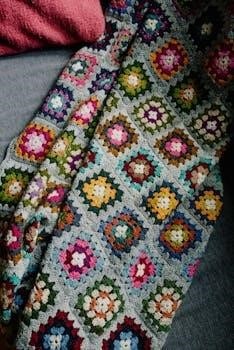
Embark on a creative journey with our quilting guide! From essential supplies to fundamental techniques like patchwork piecing, appliqué, and English paper piecing, we’ll cover it all. Discover free quilt patterns and tips to make a beautiful quilt, even as a beginner.
Welcome to the captivating world of quilting! If you’re a beginner, don’t be intimidated; quilting is a rewarding craft accessible to everyone. This guide will provide you with the essential knowledge to start your quilting journey. Quilting involves layering fabric pieces together to create a warm and decorative textile.
Historically, quilting was a practical way to repurpose fabric scraps, but today, it’s a beloved art form. Whether you’re keen to sew a baby quilt or a full-sized bed covering, the basic principles remain the same. You will learn to cut, piece, and quilt your own bed quilt. Begin by gathering your supplies. Select your fabrics. You can choose pre-cut squares from charm packs.
Patchwork is a popular technique where small pieces of fabric are sewn together to form larger designs. Appliqué involves attaching fabric shapes onto a background. English paper piecing uses paper templates to create precise shapes. Foundation paper piecing uses paper to stabilize fabric while stitching; With the proper guidance and a little practice, you’ll be creating beautiful quilts in no time.
Essential Quilting Supplies for Beginners
To embark on your quilting journey, having the right tools is crucial. A good quality rotary cutter, mat, and ruler are fundamental for precise fabric cutting. A standard sewing machine is necessary, but you don’t need a top-of-the-line model to start; a basic machine will suffice. Invest in a variety of quilting rulers, including a long ruler for cutting long strips.
Fabric is the heart of any quilt, so choose a selection of cotton fabrics in colors and patterns that appeal to you. Seam rippers are a must-have for fixing any mistakes. Quilting needles are designed to glide through multiple layers of fabric. Choose a neutral-colored thread that blends well with your fabrics. Pins are essential for holding fabric pieces together during the sewing process.
You’ll also need batting to provide warmth and loft to your quilt. Don’t forget a marking pencil or pen for transferring patterns onto fabric. Having these essential supplies will set you up for success and make the quilting process more enjoyable. Remember to buy the material necessary for basting and stitching.
Basic Quilting Techniques⁚ Patchwork Piecing
Patchwork piecing is a fundamental quilting technique that involves sewing together fabric pieces to create a larger design. Start by cutting fabric into precise shapes using a rotary cutter, mat, and ruler. Accuracy is key for ensuring that your patchwork blocks fit together seamlessly. A quarter-inch seam allowance is standard in quilting, so maintain consistency when sewing your fabric pieces together.
Chain piecing is a time-saving method where you sew multiple pieces together without cutting the thread in between. Nesting seams involves pressing the seam allowances in opposite directions to reduce bulk and create a flatter seam. Pressing your fabric after each step is crucial for achieving crisp, clean seams. Once your patchwork blocks are complete, arrange them according to your desired pattern.
Pin the blocks together carefully, matching the seams precisely. Sew the blocks together to create rows, and then sew the rows together to complete your quilt top. Patchwork piecing is a versatile technique that can be used to create a wide variety of quilt designs, from simple squares to intricate patterns. Remember to take your time and focus on accuracy for best results. Mastering patchwork is very important for beginners.
Basic Quilting Techniques⁚ Appliqué
Appliqué is a quilting technique where fabric shapes are sewn onto a background fabric to create decorative designs. There are several methods, including hand appliqué, machine appliqué, and fusible appliqué. Hand appliqué involves using a needle and thread to carefully stitch the edges of the fabric shape onto the background fabric. This method offers precise control and a delicate, hand-crafted look.
Machine appliqué uses a sewing machine to stitch around the edges of the fabric shape, often with a satin stitch or blanket stitch. Fusible appliqué involves using fusible web to adhere the fabric shape to the background fabric before stitching. This method is quick and easy, making it a great option for beginners.
When choosing fabrics for appliqué, consider the contrast between the fabric shape and the background fabric. Use templates to cut out your fabric shapes accurately. Pin or baste the shapes in place before stitching to prevent shifting. Take your time and use a consistent stitch length for a professional finish. Appliqué allows for endless creativity in quilting, adding visual interest to your project.
Basic Quilting Techniques⁚ English Paper Piecing
English Paper Piecing (EPP) is a traditional quilting technique that involves wrapping fabric around paper templates and hand-sewing the pieces together. This method is perfect for creating intricate geometric designs, such as hexagons, diamonds, and stars. To begin, cut out paper templates in the desired shapes. Then, cut fabric pieces slightly larger than the templates, and baste the fabric to the paper, folding the edges over the paper and securing them with stitches or glue.
Once all the fabric pieces are prepared, sew them together by hand, using a whipstitch or a similar stitch, along the edges of the paper templates. After joining all the pieces, remove the paper templates from the back of the fabric. EPP is a portable and relaxing craft that doesn’t require a sewing machine.
It allows for precise piecing and is ideal for projects with complex shapes and angles. Choose lightweight fabrics and strong thread for best results. Experiment with different color combinations and fabric patterns to create unique and stunning quilts using English Paper Piecing.
Basic Quilting Techniques⁚ Foundation Paper Piecing

Foundation Paper Piecing (FPP) is a quilting technique that involves sewing fabric pieces onto a paper foundation to create precise and intricate designs. This method is particularly useful for creating sharp angles, small pieces, and complex shapes that would be difficult to achieve with traditional piecing methods. To begin, print a paper pattern with numbered sections. Then, cut fabric pieces slightly larger than the sections on the pattern.
Place the first fabric piece right side up on the back of the paper pattern, covering the first section. Place the second fabric piece right side down on top of the first piece, aligning the edges. Sew along the line between the first and second sections, through both fabric layers and the paper. Press the second fabric piece open, revealing the right side.
Continue adding fabric pieces in the order indicated on the pattern, sewing along the lines and pressing each piece open. Once all the fabric pieces are added, trim the excess fabric around the edges of the pattern. Finally, remove the paper foundation from the back of the fabric. FPP allows for precise piecing and is ideal for creating stunning and detailed quilt blocks.
Choosing Fabrics for Your First Quilt
Selecting fabrics for your first quilt is a delightful step! Consider color, pattern, and fabric type. Opt for beginner-friendly materials like quilting cotton, known for its stability and ease of handling. Start with a limited color palette of 2-4 colors to maintain harmony. Choose fabrics with varying scales of patterns; a mix of small, medium, and large prints adds visual interest. Consider using pre-cut fabrics like charm packs, mini charm packs, or layer cakes, as these provide coordinated fabrics and reduce cutting time.
When selecting your fabrics, keep in mind the overall theme or style you envision for your quilt. Lighter fabrics tend to make a quilt appear brighter and more airy, while darker fabrics add depth and warmth. Consider the contrast between fabrics; high contrast can create bold designs, while low contrast provides a softer look. Always pre-wash your fabrics to prevent shrinkage and color bleeding in the finished quilt. With careful fabric selection, your first quilt will be a cherished masterpiece!
Easy Quilt Patterns for Beginners
Embarking on your quilting journey? Start with easy quilt patterns designed for beginners! These patterns utilize simple shapes and techniques, ensuring a rewarding and successful first project. A four-patch quilt, made from basic squares, is an excellent choice. Strip quilts, created by sewing strips of fabric together, offer a fast and visually appealing option. Charm pack quilts, using pre-cut 5-inch squares, simplify cutting and allow you to focus on stitching.
Another beginner-friendly pattern is the disappearing nine-patch, which creates intricate designs from simple nine-patch blocks. Consider using large blocks to minimize the number of seams. Opt for patterns with clear instructions and diagrams. Jelly roll quilts, utilizing pre-cut fabric strips, offer a convenient and colorful approach. Remember to choose patterns that align with your skill level and aesthetic preferences. Explore the world of quilting with these easy patterns and discover the joy of creating your own unique quilt!

Step-by-Step Guide to Making a Simple Quilt
Ready to create your first quilt? Let’s walk through a step-by-step guide to making a simple quilt! First, gather your materials⁚ fabric squares, batting, backing fabric, a rotary cutter, a quilting ruler, and a sewing machine. Begin by arranging your fabric squares in your desired pattern. Sew the squares together in rows, then sew the rows together to form the quilt top.

Next, create the quilt sandwich by layering the backing fabric (right side down), batting, and quilt top (right side up). Baste the layers together using safety pins or spray adhesive, ensuring a smooth and even surface. Quilt the layers together using a simple straight-line or free-motion quilting design. Finally, bind the edges of the quilt with fabric strips to create a clean and finished look. Congratulations, you’ve made your first quilt! Enjoy the warmth and satisfaction of your handmade creation!
Quilting the Layers⁚ Basting and Stitching
Once your quilt top is complete, the next essential step is quilting the layers together⁚ the quilt top, batting, and backing. This process secures the layers and adds texture and design to your quilt. First, prepare your quilt sandwich. Lay the backing fabric right side down, followed by the batting, and then the quilt top right side up. Basting is crucial to prevent shifting during quilting.
Use safety pins, basting spray, or hand-basting with needle and thread to hold the layers in place. Ensure the fabric is smooth and taut. Now, it’s time to stitch! You can choose hand-quilting or machine-quilting. For beginners, simple straight-line quilting or an all-over meander pattern are excellent choices. Use a walking foot on your sewing machine to ensure even feeding of the layers. Maintain consistent stitch length and tension. Quilting not only secures your quilt but also adds a personal touch to your finished project.
Binding Your Quilt⁚ Finishing Touches
Binding is the final step in quilting, encasing the raw edges of your quilt for a clean, professional finish; It protects the quilt from wear and tear and adds a decorative border. Start by trimming excess batting and backing fabric, ensuring a square edge. Cut strips of fabric for the binding, typically 2.25 to 2.5 inches wide, and join them to create one long strip.
Fold the binding strip in half lengthwise and press. Attach the binding to the quilt’s edge, aligning raw edges. Sew around the entire quilt, mitering the corners for a neat finish. Fold the binding over to the back of the quilt, covering the raw edges. Hand-stitch or machine-stitch the binding in place. Choose a thread that matches your binding fabric for a seamless look. Binding not only secures your quilt but also adds a personal touch to your finished project.
Resources for Beginner Quilters⁚ Classes and Online Tutorials

Embarking on your quilting journey can be exciting, and thankfully, numerous resources are available to guide you. Local quilt shops often offer beginner classes, providing hands-on instruction and a supportive community. These classes cover essential techniques and offer personalized guidance. Community centers and adult education programs also frequently host quilting courses.
Online tutorials are another fantastic option, offering flexibility and accessibility. Platforms like YouTube host countless videos demonstrating basic skills and quilt-making projects. Websites and blogs provide detailed step-by-step instructions and free patterns. Many online communities and forums connect quilters of all skill levels, providing support and inspiration. Whether you prefer in-person instruction or the convenience of online resources, you’ll find the guidance you need to start your quilting adventure and create beautiful quilts. Explore these resources to build your skills and connect with fellow quilting enthusiasts.